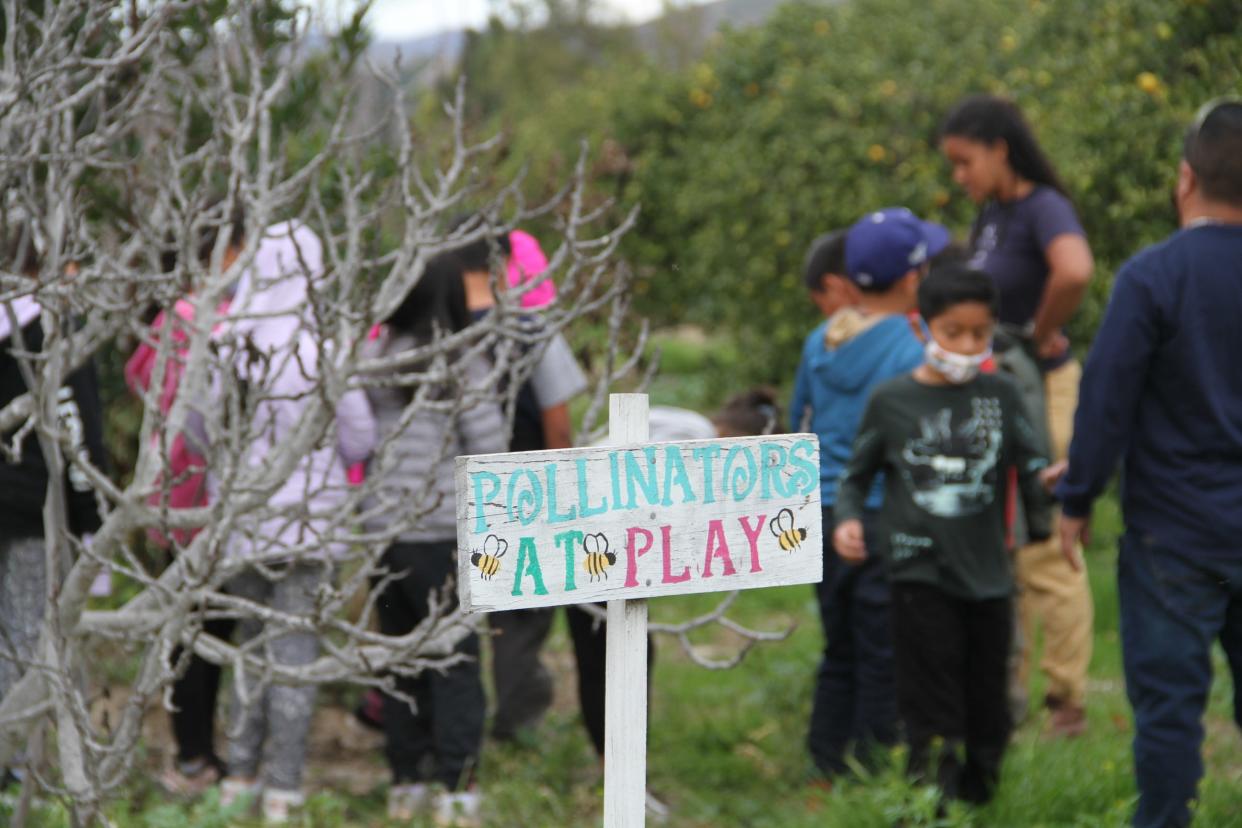Eco-tip: Lessons from National Bee Day buzz all year

Honeybees work all day in service to their hive and their pollination is essential for the growth of many plants, but the whole venture is sustainable only because the bees are paid.
Payment is made by plants in the form of nectar. The lesson: work must be rewarded to be sustainable.
Lessons from honeybees were also applied to human society shortly after National Bee Day, the third Saturday in August, by an innovative teacher at Lincoln Elementary School in Ventura. Owen Garrood, known as “Mr. G” to his kindergarten students, instructed his students to come to school dressed in yellow and black. He wore a yellow and black striped shirt, and they all wore antennae headbands. Mr. G noted using color as a theme "creates a community feel … connects them to their classroom and unites them as a group.”
Mr. G also created a positive atmosphere with instructions such as “Bee kind and helpful,” emphasizing the way honeybees all have roles in helping the hive. He emphasized the bond of the bees, achieved through teamwork, under the leadership of the queen bee.
His Queen Bee puppet sits above the children and helps Mr. G decide who should take home a Baby Bee puppet because they have behaved well, worked hard or been particularly helpful. The next day, the kids who were awarded a Baby Bee share with the class what they and the baby bee did after they left school the day before, he reported.
Even bees’ buzzing sound was part of his lesson. As instructed, the kids made a low, buzzing sound as they walked across the courtyard and through the school. As he wrote to me in an email: “It is scientifically proven that the vibrations made in the throat cause the mind to settle and calm anxiety; hence the reason they use it in yoga.”
Last month, other organizations also used the occasion of National Bee Day to schedule educational outreach. At an event on Thursday, the Museum of Ventura County hosted an event educating the public about pollinators such as honeybees and monarch butterflies. The museum, in Ventura, hosted presenters from the Ventura office of the California Department of Fish and Wildlife. Participants planted yarrow seeds in pots they personalized and were allowed to keep.
Bee Day at the Ventura County Agricultural Museum in Santa Paula, on Aug. 19, had many more activities. Dozens of children scurried from crafts to displays and entertainment. Children made candles from wicks rolled into small sheets of beeswax and presenters gave context to a year-round highlight of the museum — a working beehive. The hive, on permanent display within the museum, is fully enclosed with transparent plastic but has an access port to flowers and plants outside.
During the remainder of the school year, Students for Education and Agriculture, or SEEAG, a nonprofit serving schools throughout Ventura County, will teach students about the importance of honeybees and other pollinators to local agriculture. Their third-grade education program, Farm Lab, ventures into the field to observe pollinators at work amid lemon blossoms. SEEAG’s middle and high school programs, which focus on agricultural careers, spotlight local insectaries, beekeepers and companies working to preserve and cultivate pollinators, according to Seth Wilmoth, the group's education director.
Just as flowers “pay” bees with nectar, human society must also pay a debt to pollinators if we want to sustain their work. You can see the types of plants best suited to sustain the work of pollinators at the Ventura County Government Center’s pollinator garden. The garden’s year-round blooms are attracting bees, according to Patrick Squires, facilities manager for the General Services Agency, but attracting butterflies can "take a few years.” Use of only organic pest control methods in those gardens is also designed to boost pollinator populations.
Squires recently oversaw installation of a second pollinator garden at the government center. Two planters running between the Hall of Justice cafeteria and the Hall of Administration north entrance have been replanted with the same vegetation as the year-old pollinator garden. Squires is planning informative signs to educate, and the agency provides group tours on Earth Day.
David Goldstein, an environmental resource analyst with the Ventura County Public Works Agency, can be reached at 805-658-4312 or david.goldstein@ventura.org.
This article originally appeared on Ventura County Star: Eco-tip: Lessons from National Bee Day, pollinators buzz all year

